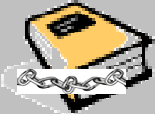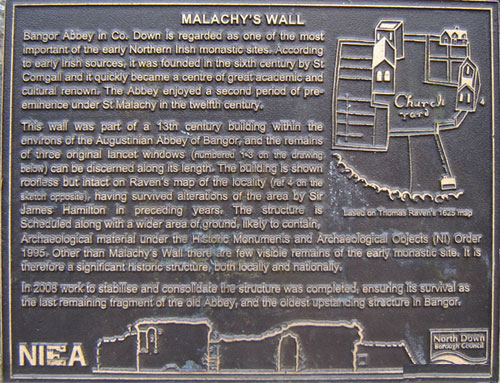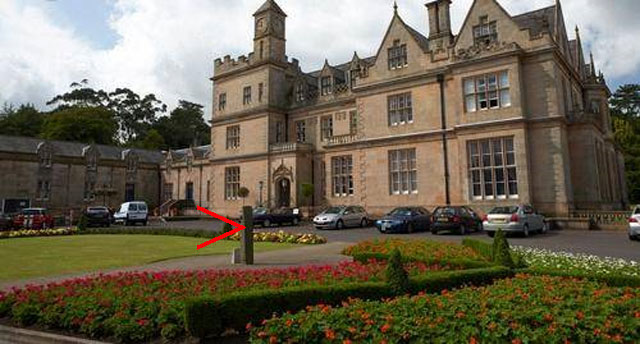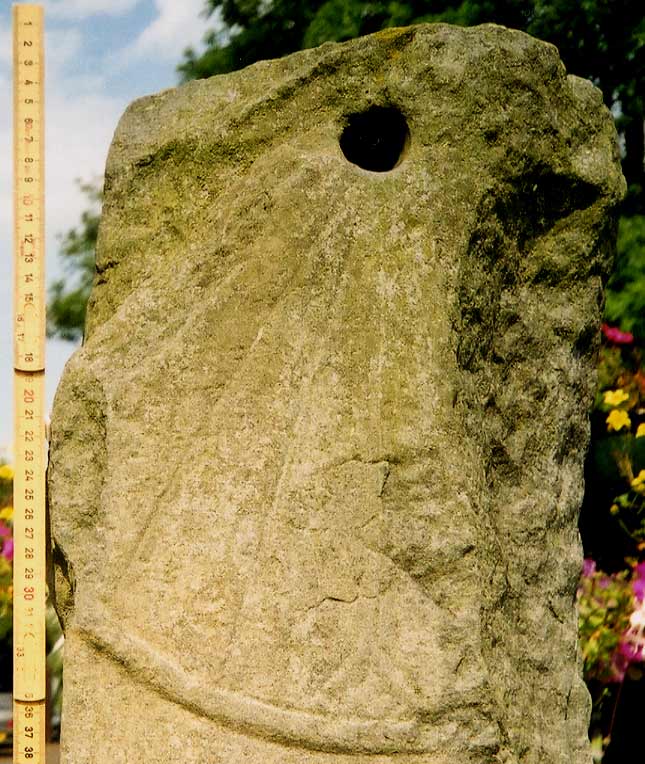
Go to my Homepage

Go to Prehistoric Alignments & Dials

Go to Ancient Monastic Dials

Go to Medieval Dials

Go to Modern (1600+) Dials

Go to Sundial Info.and Books

Go to my Homepage |
 Go to Prehistoric Alignments & Dials |
 Go to Ancient Monastic Dials |
 Go to Medieval Dials |
 Go to Modern (1600+) Dials |

Go to Sundial Info.and Books |
 |
St. Comgall
founded Bangor Abbey in 558AD and it grew to become one of the most important
seats of learning in Ireland, with almost 3,000 monks at the time of Comgall’s
death in 601AD. Regarded as one of the most important of the early Irish monastic sites, within the extensive rampart which encircled its monastic buildings, students studied scripture, theology, logic, geometry, arithmetic, music, and the classics. Mo Sinu moccu Min was the fifth Abbot of Bangor when it was a major center of learning called the "Light of the World". Many missionaries studied here, Carthach of Lismore and Fintan of Doon, Columbanus and Gall who went off to Continental Europe in 590 AD and founded the famous monasteries of Luxiell (France), St Gallen (Switzerland) and Bobbio (Italy). and Bregenz (Austria). Following many Viking raids in the 9th century it was partially restored by Saint Malachy in the 12th Century, when he was Abbot. Nothing now remains of the original buildings of Comgall's Monastery but portion of Malachy's restoration is marked by the plaque in the photo to the left. |
 |
Bangor Castle, which now serves as the Town Hall, was completed in 1852 for Robert Edward Ward. It was really more of a grand manor than a castle, with 35 bedrooms and a ballroom. The local council acquired the property in the early 1950s and the castle is now the headquarters of North Down Borough Council. It is surrounded by beautiful gardens featuring flowerbeds of azaleas and rhododendrons and a variety of international trees and plants from around the world. In the garden there is an ancient, vertical, stone sundial - the only remnant of the original monastery. The red arrow in the photo points to it. |
 |
1500mm high 300mm wide by 200mm thick dated circa 900 A.D. Originally located in Bangor Monastery, of which nothing remains, it was relocated to the Castle over 100 years ago. |
>
 |
Only five timelines of a possible twelve remain on the damaged 'U' shaped head and nothing remains of the gnomon but the hole in the slab where a gnomon would have fitted. Three crosses are carved on the shaft. |